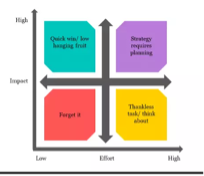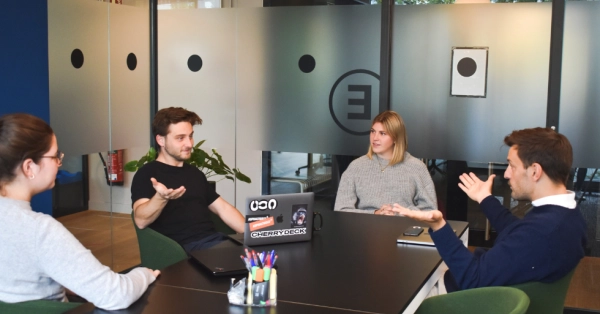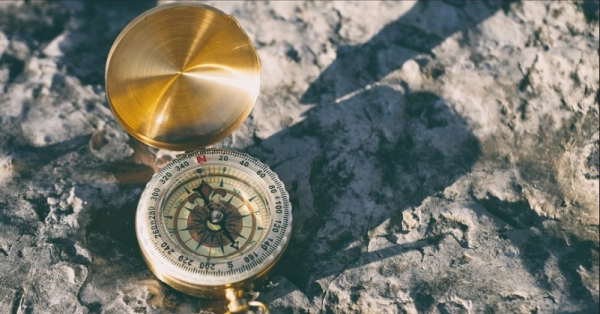Without a mission statement, you may get to the top of the ladder and then realize it was leaning against the wrong building! - Dave Ramsey

Becoming a sustainable business starts with establishing priorities and formally writing a sustainability mission statement. This statement becomes the foundation of a startup/project sustainability efforts. It provides the organization and its stakeholders with an understanding of what’s most important and what your startup/project can do to protect the planet and be more socially responsible with the people.
In most cases, your startup/project already has an overarching mission statement. The sustainability statement is a supplement – not a new corporate mission statement. Take your normal mission statement (assuming you have one) and consider how that mission can be delivered through the sustainable lens. That is the objective.
How To Write A Sustainability Statement
Every startup/project who wants to work in the Triple Balance ecosystem needs to create a sustainability mission statement that will capture the startup/project`s green values and culture, engage team members, and rally everyone to become greener and more socially responsible.
Coming up with an official mission statement will hold your organization accountable to a standard and set of priorities. The statement must capture how you will be more socially and environmentally responsible than in the past and get into specifics that are relevant to your industry. By making your commitment to sustainability official via a formal public statement, you are more likely to see continued improvements.
This is often a group exercise facilitated via a brainstorming session. The goal is to capture the essence of your values and sustainability objectives, but try to keep it focused on a few top priorities and core themes. In the end, your mission statement should be:
- Clear – avoid jargon and nebulous terms; state specific actions and goals
- Concise – simple and to the point; short enough to remember and paraphrase
- Useful – helps explain priorities; rallies employees to do the things aligned with your corporate and green mission statement
- There is no one formula for the perfect mission statement, but a green mission statement often includes three parts:
1. Why – Why is sustainability important to us? What do we believe?
2. Goal – What is our end goal? What will we do? What do we want to accomplish?
3. Success Criteria – How is success measured? What does our future company look like?
Examples - corporate sustainability mission statements
Patagonia: “Build the best product, cause no unnecessary harm, use business to inspire and implement solutions to the environmental crisis.”
Starbucks: We are committed to offering high-quality, ethically purchased and responsibly produced products. We are committed to investing in paths to opportunity through education, training and employment. We are committed to minimizing our environmental footprint and inspiring others to do the same.
Nike: Our mission is to do everything possible to expand human potential. We do that by creating groundbreaking sport innovations, by making our products more sustainably, by building a creative and diverse global team and by making a positive impact in communities where we live and work.
The Four Steps
Understand your drivers
Every industry impacts the environment in a different way and every company will have unique products, services, operations and situations. Do an honest assessment of what your big eco-impact drivers really are so that you can craft a mission that actually speaks to your ability to improve. No single generic green mission statement works for everyone.
For example, a software company may decide that business travel, data center energy usage and their office space have the most impact on the environment. Their green mission should discuss focusing on those areas that are most relevant to their operations. A restaurant may determine that their food sources, waste stream and heating/cooling are their keys. They should craft a statement that recognizes those drivers instead.
Tell your own story
Have an open discussion with your team or trusted allies of your current sustainability story and vision. Discuss what are you already doing and what are you planning on doing. It can include being more energy efficient, reducing waste, reducing your carbon footprint, minimizing pollution, eliminating plastic, changing how you manufacturer, sourcing from other sustainable companies.
Use your imagination to see what the company looks like in a few years once it becomes more sustainable. The more concrete your sustainability story, the better. Write down the major green initiatives and improvements you have already made and the ones you want to take on. Here’s a list of the areas to discuss:
|
Energy Waste Travel Transportation Water Charities |
Office Space Employee Policies Inclusion Materials Products |
Operations Manufacturing Process Waste Pollution Services Local Community |
Prioritize
Once you have your list of initiatives, discuss which ones will have the greatest impact and are most important. Eliminate the ones that are trivial, not important or not very impactful. Once you get your list down to the top 5 to 10 initiatives, try to consolidate to a shorter list.
The final part of this step is to rank your initiatives based on their priority and impactfulness. Use the Impact/effort matrix to determine this:
Write your statement
The final step is to write a mission statement based on the sustainability goals you have prioritized above. You’ll likely go back and cut down the wordiness. Good mission statements serve multiple functions, define objectives, and live for a long time so definitely edit and get it to the point we’re your excited about it and believe it.
There are several ways to start your mission statement. Here are a few suggestions:
We will…
Our mission is…
Our goal is…
We are committed to…
The core of your mission statement will describe what you will actually do. Here are some examples:
… eliminate waste and pollution
… make our products more sustainable
… be energy efficient
… use clean energy sources
… recycle everywhere possible
… treat our employees fairly
… be diverse and inclusive
… partner with sustainable companies
The final part of your mission statement will state your end goals. Here are a few suggestions:
… to preserve the environment
… to protect the planet
… to improve our community
… to minimize our carbon footprint
… to get to zero waste
… to get to carbon neutral
Sustainability Mission Statement Examples
Here are generic green mission statements that may give you some ideas and get your creative juices flowing.
- All our products will be made from recycled materials and eco-friendly energy resources.
- We will employ a production process that prevents waste and reduces the manufacturing requirements for materials, energy and personnel.
- Our development, production and supply processes will minimize environmental pollution and be 100% in compliance with environmental legislation.
- We will consistently base all our actions on sustainability principles to protect our planet and future.
- Everything we do will be socially responsible and sustainable to preserve a livable environment.
- Our entire value chain and all processes will be firmly anchored in sustainable economics.
- We will offer innovative products that remain highly efficient throughout their service life and support a sustainable energy supply.
- All our operations and business practices will be grounded in sustainability principles.
- Our supply chains will comply with the recognized international social and environmental standards (according to the United Nations Global Compact) and our suppliers will be aware of and support our sustainability objectives.
- We will use clean energy for all out facilities power and our entire value chain to minimize CO2 emissions
- We will offer safe and healthy jobs with fair wages.
- We maintain a diverse, participation-based corporate culture that establishes optimum conditions for the sustainable commitment of the employees.
- We are committed to working locally to improve the social, economical and environmental well being of our community.
- Our goal is to improve the environment in our community by working with area businesses, community leaders and our neighbors to create a clean and safe place to live and work.
- We are committed to a sustainable future and to improving the social, economic and environmental well being of the community.
- We are dedicated to environmental improvements that foster a sustainable future and lead to social and economical improvements in the community we do business.
- Our workers are afforded excellent working conditions and are treated with dignity and respect.
- Our services are delivered in a way that minimizes the environmental impact and promotes business integrity.
- Our mission is to drive sustainability throughout the global supply chain by integrating sustainability in the overall procurement process.
























